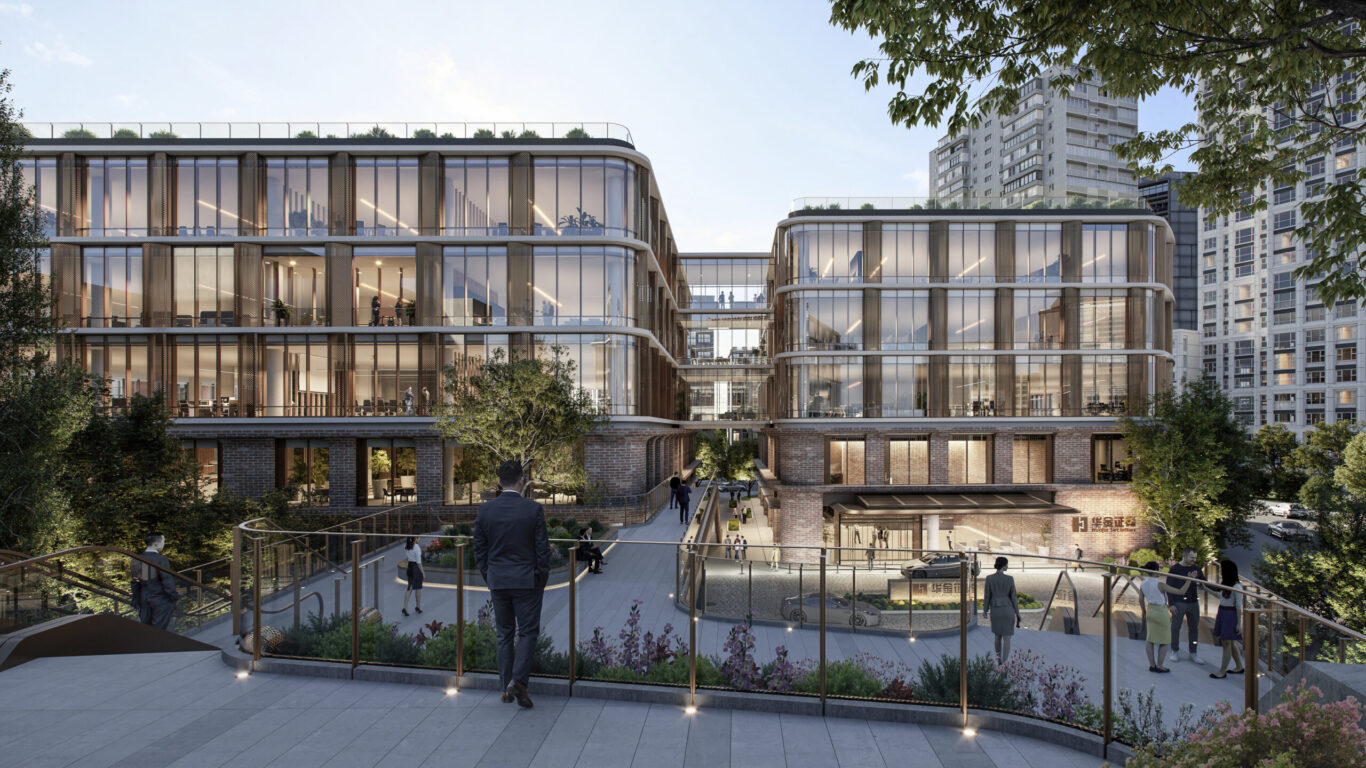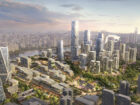Restoration and reinvention
Located in Shanghai’s Jing’an district, this waterfront site includes industrial infrastructure that once served a crucial shipping route along the Suzhou River. In the 1930s, the site was a major battleground in the Second Sino-Japanese War. The Sihang Warehouse, a building damaged during the war, has been preserved as a memorial and is a significant tourist destination. The redevelopment of the adjacent south parcel, along the waterfront, aims to reinvigorate the area through restoration and thoughtful addition.

The curved site facing the river and adjacent to the Sihang Warehouse will feature a mixed-use complex that adds office, cultural programming, and high-end retail to the district. The development includes several low-rise buildings, two 5-story office buildings, an 8-story office and cultural center, and the restoration of two historical residential buildings, which will contain boutique office space designed to complement traditional Shanghainese architecture.









